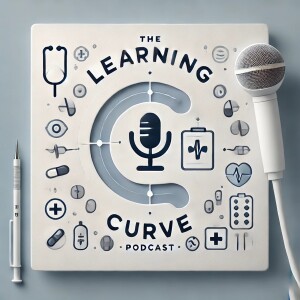

The Learning Curve
Episode 15 - Medicine Behind Bars: Navigating the Challenges of Incarceration Health Care featuring Dr. Jordan Vaughn
2025-10-03
Summary
In this episode of The Learning Curve, Dr. Irtaza Asar and Dr. Jordan Vaughn discuss the often-overlooked field of incarceration medicine. They explore the unique challenges faced by incarcerated patients, including barriers to care, communication difficulties, and ethical dilemmas. Dr. Vaughn emphasizes the importance of incorporating incarceration medicine into medical education and training, advocating for systemic changes to improve healthcare access for this vulnerable population. The conversation highlights...
Summary
In this episode of The Learning Curve, Dr. Irtaza Asar and Dr. Jordan Vaughn discuss the often-overlooked field of incarceration medicine. They explore the unique challenges faced by incarcerated patients, including barriers to care, communication difficulties, and ethical dilemmas. Dr. Vaughn emphasizes the importance of incorporating incarceration medicine into medical education and training, advocating for systemic changes to improve healthcare access for this vulnerable population. The conversation highlights the need for awareness of biases and the importance of advocacy in providing equitable care.
Takeaways
- Incarceration medicine is a critical area of medical education that is often overlooked.
- Healthcare providers must be aware of the unique barriers faced by incarcerated patients.
- Communication with incarcerated patients can be challenging due to legal and ethical considerations.
- Residents and attending physicians often feel unprepared to care for incarcerated patients due to lack of training.
- Advocacy is essential for improving healthcare access for incarcerated individuals.
- Understanding hospital policies and local jail systems is crucial for effective patient care.
- Healthcare providers should be empowered to advocate for their patients' rights.
- Biases can affect clinical decision-making; awareness is key to better care.
- Simulation training can help prepare learners for real-life encounters with incarcerated patients.
- Resources and guidelines are available to help integrate incarceration medicine into curricula.
Comments (3)
More Episodes
All Episodes>>You may also like
Create Your Podcast In Minutes
- Full-featured podcast site
- Unlimited storage and bandwidth
- Comprehensive podcast stats
- Distribute to Apple Podcasts, Spotify, and more
- Make money with your podcast
It is Free












